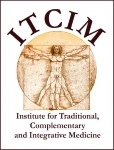
Prof. Dr. Michael Frass - Austria
Abstract of the presentation
Additive Homeopathy Improves Quality of Life and Prolongs Survival in Patients With NSCLC: A Prospective, Randomized, Placebo-Controlled, Double-Blind, Three-Arm, Multicenter Study
Branch: Homeopathy (Cancer PFAPA)
Background. Patients with advanced non-small cell lung cancer (NSCLC) have limited treatment options. Alongside conventional anticancer treatment, additive homeopathy may help to alleviate side effects of conventional therapy. We wanted to investigate the effect of additive homeopathy on quality of life (QoL) and survival in NSCLC patients.
Methods. In this prospective, randomized, placebo-controlled, double-blind, three-arm, multicenter phase III study, we compared additive homeopathic treatment and placebo in patients with IV NSCLC with respect to QoL in two randomized groups, and survival time in all three groups. A total of 150 patients with stage IV NSCLC were included in the study. Ninety-eight received either individualized homeopathic medicinal products (n=51) or placebo (n=47) in a double-blinded fashion. Fifty-two control patients (third group) without any homeopathic treatment were observed for survival only.
Results. QoL as well as functional and symptom scales showed significant improvement with homeopathy compared to placebo after 9 and 18 weeks of homeopathic treatment (p<0.001). Median survival time was significantly longer in the homeopathy group (435 days) vs. placebo (257 days; p=0.010) as well as vs. control (228 days; p<0.001). Survival rate in the homeopathy group differed significantly from placebo (p=0.020) and from control (p<0.001).
Conclusion. QoL improved significantly in the homeopathy group compared to placebo. In addition, survival was significantly longer in the homeopathy group versus placebo and control. The study suggests that homeopathy positively influences both QoL and survival. Further studies including other tumor entities are warranted. These findings confirm results of a previous open pragmatic study regarding QoL and a retrospective study regarding prolonged survival. The interval of 9 weeks between appointments is compatible with the financial resources of public health services as well as with the time resources of the patients. Therefore, we believe that additive homeopathy fits perfectly into the health programs of public health services.
Please note that some of the texts also include machine-generated translations.





